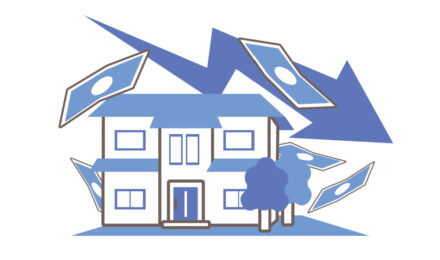Home renovations can enhance your living space, increase functionality, and even raise your property’s market value. Whether you’re a DIY beginner or a homeowner seeking smart upgrades, investing in the right improvements pays off in the long run. This guide features 10 impactful home improvement projects—ranging from simple updates to more advanced renovations—that can make your home more comfortable, stylish, and efficient.
1. Revamp Your Walls with Fresh Paint
Painting is one of the most affordable and effective ways to transform any room. A fresh coat of paint can conceal imperfections, redefine the space, and set the mood. Choose high-quality paint and primers, clean the surfaces, and repair any cracks for the best results. A medium-sized room typically costs between $200 and $500 in materials. This weekend-friendly DIY project is ideal for beginners and offers an instant visual upgrade.
2. Upgrade Light Fixtures
Lighting serves both practical and aesthetic purposes. Replacing outdated fixtures with modern ones can refresh a room’s ambiance while improving energy efficiency—especially when switching to LED bulbs, which use up to 80% less energy than traditional options. Add dimmer switches to create flexible lighting moods. Depending on style, fixtures range from $50 to $500. Basic electrical knowledge is useful, but many upgrades are DIY-friendly.
3. Refresh Your Kitchen Backsplash
Installing a new backsplash can dramatically enhance your kitchen’s look without a full renovation. Peel-and-stick tiles cost around $10–$20 per square foot, while ceramic or glass tiles offer durability and style at $15–$40+ per square foot. Choose a design that complements your cabinets and countertops—subway tiles for a classic touch, or mosaics for a bold statement. This project typically takes 1–2 days and is manageable for those with moderate DIY skills.
4. Install Energy-Efficient Windows
Upgrading to energy-efficient windows improves insulation and cuts utility bills. Double- or triple-pane models with low-emissivity (Low-E) coatings can reduce heat loss by up to 50%. Although professional installation costs $300–$1,000 per window, the long-term savings and comfort are often worth the investment. Look for Energy Star-rated models for maximum efficiency. This project is best left to professionals due to its complexity.
5. Create an Outdoor Living Area
Expanding your living space outdoors can boost home value and enjoyment. Consider building a wooden deck ($15–$25 per sq. ft.) or a concrete patio ($8–$20 per sq. ft.). Enhance the area with built-in seating, lighting, and a fire feature. For small yards, vertical gardens or potted plants can maximize space. Intermediate DIYers can handle most tasks, though large decks may require permits and pro assistance. Completion time varies from a few days to two weeks.
6. Upgrade Bathroom Fixtures
You don’t need a full remodel to refresh your bathroom. Replacing faucets, showerheads, and cabinet hardware can significantly improve the space. Opt for low-flow fixtures to conserve water—some use 20% less without sacrificing performance. Add a new vanity or framed mirror for added impact. Fixtures cost $100–$500; vanities range from $500–$2,000. Most upgrades are straightforward and can be done in a day or two.
7. Add Built-In Storage Solutions
Built-in storage like bookshelves, under-stair cabinets, or custom closets helps reduce clutter while maximizing space. Prefabricated systems cost between $100 and $1,000; custom installations range from $1,000 to $5,000. If you’re handy, you can build shelves for $50–$200 in materials. This intermediate carpentry project takes 2–5 days and adds daily convenience and buyer appeal.
8. Refinish or Replace Flooring
Worn flooring can drag down your home’s appeal. Refinish hardwood floors for $3–$8 per sq. ft. to restore their original beauty. Alternatively, install luxury vinyl plank (LVP) for $2–$7 per sq. ft.—a water-resistant, durable, and DIY-friendly option that mimics wood or tile. Professional installation ensures quality but adds cost. Allow 3–7 days for drying and installation based on the material.
9. Insulate the Attic for Energy Savings
Adding insulation to your attic keeps your home more comfortable year-round and lowers heating and cooling costs. Fiberglass batts or blown-in cellulose cost $1–$2 per sq. ft. Check your current insulation level—R-30 to R-60 is recommended, especially in colder climates. This project is DIY-friendly but requires protective gear. Expect to spend $1,000–$3,000 for an average attic. The investment quickly pays off through energy savings.
10. Boost Curb Appeal with Landscaping
Your home’s exterior sets the first impression. Start with simple tasks like mowing, trimming, and adding mulch ($2–$5 per bag). For a more dramatic effect, plant native, low-maintenance perennials or install a new mailbox or gravel path ($100–$500). While professional landscapers charge $50–$100 per hour, most tasks can be tackled over a weekend by DIYers. Great landscaping adds both charm and value.
Getting Started: Tips for Success
Set realistic budgets and timelines before starting any project. Check local building codes, especially for structural or electrical work. Begin with simple upgrades—like painting or swapping fixtures—before tackling more advanced renovations. When in doubt, hire professionals to ensure safety and quality. Choose projects that meet your immediate needs while also enhancing long-term resale value.
Why Invest in Home Improvements?
Home improvement is about more than appearances—it’s about creating a space that suits your lifestyle. According to the National Association of Realtors, energy-efficient windows and kitchen remodels can recover 60–80% of their cost at resale, and even minor upgrades like a home office can increase value by 6%. Most importantly, renovations enhance comfort, satisfaction, and daily living.
Ready to begin? Choose one project from this list and start transforming your home into the space you’ve always envisioned. Step by step, you’ll build a more comfortable, beautiful, and valuable place to live.
Home renovations can enhance your living space, increase functionality, and even raise your property’s market value. Whether you’re a DIY beginner or a homeowner seeking smart upgrades, investing in the right improvements pays off in the long run. This guide features 10 impactful home improvement projects—ranging from simple updates to more advanced renovations—that can make your home more comfortable, stylish, and efficient.
1. Revamp Your Walls with Fresh Paint
Painting is one of the most affordable and effective ways to transform any room. A fresh coat of paint can conceal imperfections, redefine the space, and set the mood. Choose high-quality paint and primers, clean the surfaces, and repair any cracks for the best results. A medium-sized room typically costs between $200 and $500 in materials. This weekend-friendly DIY project is ideal for beginners and offers an instant visual upgrade.
2. Upgrade Light Fixtures
Lighting serves both practical and aesthetic purposes. Replacing outdated fixtures with modern ones can refresh a room’s ambiance while improving energy efficiency—especially when switching to LED bulbs, which use up to 80% less energy than traditional options. Add dimmer switches to create flexible lighting moods. Depending on style, fixtures range from $50 to $500. Basic electrical knowledge is useful, but many upgrades are DIY-friendly.
3. Refresh Your Kitchen Backsplash
Installing a new backsplash can dramatically enhance your kitchen’s look without a full renovation. Peel-and-stick tiles cost around $10–$20 per square foot, while ceramic or glass tiles offer durability and style at $15–$40+ per square foot. Choose a design that complements your cabinets and countertops—subway tiles for a classic touch, or mosaics for a bold statement. This project typically takes 1–2 days and is manageable for those with moderate DIY skills.
4. Install Energy-Efficient Windows
Upgrading to energy-efficient windows improves insulation and cuts utility bills. Double- or triple-pane models with low-emissivity (Low-E) coatings can reduce heat loss by up to 50%. Although professional installation costs $300–$1,000 per window, the long-term savings and comfort are often worth the investment. Look for Energy Star-rated models for maximum efficiency. This project is best left to professionals due to its complexity.
5. Create an Outdoor Living Area
Expanding your living space outdoors can boost home value and enjoyment. Consider building a wooden deck ($15–$25 per sq. ft.) or a concrete patio ($8–$20 per sq. ft.). Enhance the area with built-in seating, lighting, and a fire feature. For small yards, vertical gardens or potted plants can maximize space. Intermediate DIYers can handle most tasks, though large decks may require permits and pro assistance. Completion time varies from a few days to two weeks.
6. Upgrade Bathroom Fixtures
You don’t need a full remodel to refresh your bathroom. Replacing faucets, showerheads, and cabinet hardware can significantly improve the space. Opt for low-flow fixtures to conserve water—some use 20% less without sacrificing performance. Add a new vanity or framed mirror for added impact. Fixtures cost $100–$500; vanities range from $500–$2,000. Most upgrades are straightforward and can be done in a day or two.
7. Add Built-In Storage Solutions
Built-in storage like bookshelves, under-stair cabinets, or custom closets helps reduce clutter while maximizing space. Prefabricated systems cost between $100 and $1,000; custom installations range from $1,000 to $5,000. If you’re handy, you can build shelves for $50–$200 in materials. This intermediate carpentry project takes 2–5 days and adds daily convenience and buyer appeal.
8. Refinish or Replace Flooring
Worn flooring can drag down your home’s appeal. Refinish hardwood floors for $3–$8 per sq. ft. to restore their original beauty. Alternatively, install luxury vinyl plank (LVP) for $2–$7 per sq. ft.—a water-resistant, durable, and DIY-friendly option that mimics wood or tile. Professional installation ensures quality but adds cost. Allow 3–7 days for drying and installation based on the material.
9. Insulate the Attic for Energy Savings
Adding insulation to your attic keeps your home more comfortable year-round and lowers heating and cooling costs. Fiberglass batts or blown-in cellulose cost $1–$2 per sq. ft. Check your current insulation level—R-30 to R-60 is recommended, especially in colder climates. This project is DIY-friendly but requires protective gear. Expect to spend $1,000–$3,000 for an average attic. The investment quickly pays off through energy savings.
10. Boost Curb Appeal with Landscaping
Your home’s exterior sets the first impression. Start with simple tasks like mowing, trimming, and adding mulch ($2–$5 per bag). For a more dramatic effect, plant native, low-maintenance perennials or install a new mailbox or gravel path ($100–$500). While professional landscapers charge $50–$100 per hour, most tasks can be tackled over a weekend by DIYers. Great landscaping adds both charm and value.
Getting Started: Tips for Success
Set realistic budgets and timelines before starting any project. Check local building codes, especially for structural or electrical work. Begin with simple upgrades—like painting or swapping fixtures—before tackling more advanced renovations. When in doubt, hire professionals to ensure safety and quality. Choose projects that meet your immediate needs while also enhancing long-term resale value.
Why Invest in Home Improvements?
Home improvement is about more than appearances—it’s about creating a space that suits your lifestyle. According to the National Association of Realtors, energy-efficient windows and kitchen remodels can recover 60–80% of their cost at resale, and even minor upgrades like a home office can increase value by 6%. Most importantly, renovations enhance comfort, satisfaction, and daily living.
Ready to begin? Choose one project from this list and start transforming your home into the space you’ve always envisioned. Step by step, you’ll build a more comfortable, beautiful, and valuable place to live.




